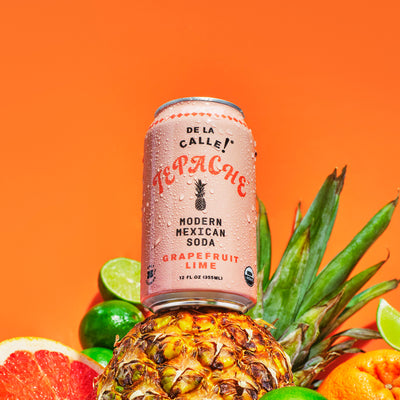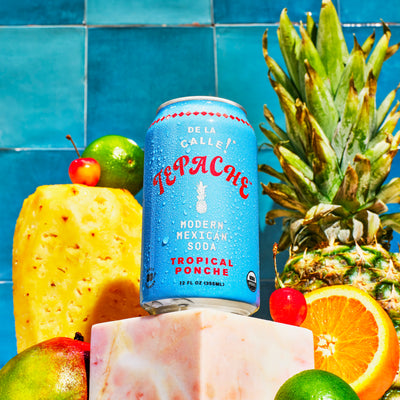Cinco de Mayo: History, Celebrations, and Facts

Often confused with Mexican Independence Day, Cinco de Mayo is actually a Mexican holiday that celebrates the 1862 defeat of French forces by the Mexican army. Today, Cinco de Mayo is celebrated in countries all over the world and is associated with traditional Mexican foods, drinks, music, and dancing.
In this article, we’ll look at the history of Cinco de Mayo and the different annual celebrations that have become a great source of Mexican pride.
History
Cinco de Mayo, which translates to the “Fifth of May,” is also known as the Anniversary of the Battle of Puebla. In 1861, Mexico declared that they would temporarily prohibit the repayment of foreign debts. This greatly angered Spain, England, and France, all of which Mexico owed money to, and so the European nations decided to invade Mexico.
Napoleon III, the president of France at the time and nephew of Napoleon I, was specifically interested in conquering Puebla because he wanted to turn it into a base to aid the Confederacy during the American Civil War. This has led some historians to speculate that the French defeat at the Battle of Puebla helped to prevent the Confederate army from winning the war.
Although the other two nations had retreated from Mexico by April 1862, the French were insistent upon establishing a monarchy under Maximilian of Austria in Mexico. They were also growing wary of the U.S. power in North America and wanted to ensure that there was still a strong French presence, especially given all the land that the French lost to the U.S. with the Louisiana Purchase in 1803.
French and Mexican forces came to a head on May 5, 1862 when 6,000 French troops led by General Charles Latrille de Lorencez attacked the small town of Puebla de Los Angeles in east-central Mexico. These forces were intent on attacking Veracruz and eventually Mexico City but met resistance in Puebla. At this point in time, France had one of the greatest armies in the world and had just won a series of decisive victories in other parts of the world. In fact, they had not been beaten in battle in 50 years. The Mexican forces, led by General Ignacio Zaragoza, were undoubtedly the underdogs in this confrontation, with only 2,000 men and poor equipment.
However, the Mexican army, composed mostly of men of indigenous or mixed ancestry, were determined to win. They fortified the town and prepared for battle. Lasting only from daybreak to dusk, the Mexican forces defeated the French and successfully maintained their control over Puebla. Later, the town was renamed Puebla de Zaragoza in honor of the Mexican general who defended it so gallantly on May 5, 1862.
Symbolic Value
The French stayed in Mexico until 1867 and after Napoleon III sent 30,000 more troops to Mexico, overran Puebla, and eventually took Mexico City. Despite its small impact on the course events, the Battle of Puebla was a highly symbolic victory for the Mexican forces.
Defeating an external, European enemy bolstered the strength of the Mexican government and helped create a sense of Mexican pride. Furthermore, this victory served as a symbol of Mexican refusal of foregin domination. Immediately after the battle, President Juárez declared Cinco de Mayo a holiday.
Celebrations
Cinco de Mayo celebrations have a long history in Mexico, the U.S., and are growing in popularity in other parts of the world.
Mexico vs. America
In the Mexican state of Puebla, Cinco de Mayo is celebrated every year with parades and battle reenactments. However, for the most part, there’s no big Cinco de Mayo celebrations in other parts of the country. In fact, Cinco de Mayo is not an official Mexican federal holiday, so banks, schools, and most businesses stay open.
Somewhat surprisingly, Cinco de Mayo is a more popular holiday in the U.S. than in Mexico. In fact, the historical significance of the day was recognized by the American government in 2005. This is in large part due to the work of Chicano activists in the 1960s who went to great lengths to popularize the holiday. They grasped onto the symbolic legacy of the day and celebrated it because of what Cinco de Mayo represents in terms of the power of indigenous Mexicans to resist foreign control.
Cinco de Mayo celebrations happen in the regions of the U.S. with the largest Mexican and Mexican-American populations such as Chicago, Houston, and Los Angeles, where the largest Cinco de Mayo celebration in the world happens. Much like in Puebla, there are parades in the U.S. accompanied by parties, dancing, music, and food to celebrate Mexican culture.
Cinco de Mayo in Los Angeles
The Cinco de Mayo celebration in Los Angeles is the largest in the world and is characterized by the Fiesta Broadway event. This annual street festival includes vendors and musicians that celebrate Meixcan culture. Spanning several blocks on Broadway, the Fiesta Broadway has attracted thousands of visitors every year since it began in 1990.
Cuisine
The official dish of Cinco de Mayo is Mole poblano because it is a favorite in the town of Puebla. Mole poblano is a traditional Mexican sauce made from chocolate and chili pepper, often served over meat and rice. Tepache, a classic Mexican drink made from fermented pineapple is also a staple of Cinco de Mayo celebrations.
In the U.S., people tend to eat Mexican foods such as tacos, guacamole, and salsa. In fact, Americans consume on average 87 million pounds of avocados every Cinco de Mayo, a great increase from the amount consumed on every other day of the year.
Music and Dance
One of the most distinctive aspects of a Cinco de Mayo celebration is the music. At most celebrations in the United States, mariachi bands perform and other Mexican folk music is played.
People dance the traditional “Baile folklórico,” a dance that has its origins in Mexico’s War of Independence and is a great source of national pride. Oftentimes women wear “publa dresses” on Cinco de Mayo. These are colorful dresses with rich, intricate patterns that accentuate the beauty of the dance.
Cinco de Mayo Around the World
Although the largest Cinco de Mayo celebrations undoubtedly occur in the U.S. and Mexico, there are celebrations in Australia, Canada, South Africa, and Japan. Most notably, in Vancouver, Canada, people celebrate Cinco de Mayo with a “skydiving boogie,” an impressive aerial feat including acrobatics.
Is Cinco de Mayo Mexican Independence Day?
Given that Cinco de Mayo is the most popular Mexican holiday celebrated in the U.S., many Americans equate it with the 4th of July and assume that it marks Mexican Independence Day. However, Mexican Independence Day, otherwise known as Día de Independencia, is celebrated on September 16th. This day marks the famous “Cry of Dolores” made by the priest and revolutionary Miguel Hidalgo y Costilla that called Mexicans to arms and led to a declaration of war against the Spanish almost 50 years before the Battle of Puebla.
Conclusion
Cinco de Mayo is an annual celebration that marks the defeat of the French forces by the Mexican army in 1862 at the Battle of Puebla. Although this battle was not wildly impactful on the trajectory of the French invasion, it had immense symbolic significance and still serves as a source of Mexican national pride, especially in the United States.
The largest Cinco de Mayo celebrations happen every year in the U.S., thanks to the work of Chicano activists in the 1960s, and include parades, music, dancing, and traditional Mexican drinks and foods.
Sources:
https://www.napoleon.org/en/young-historians/napodoc/napoleon-iii-emperor-of-the-french-1808-1873/
https://www.albany.edu/jmmh/vol3/chicano/chicano.html
https://www.tshaonline.org/handbook/entries/zaragoza-ignacio-seguin












